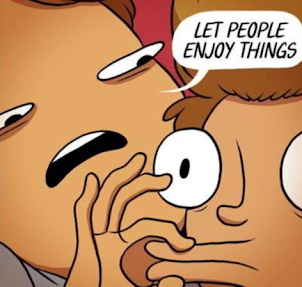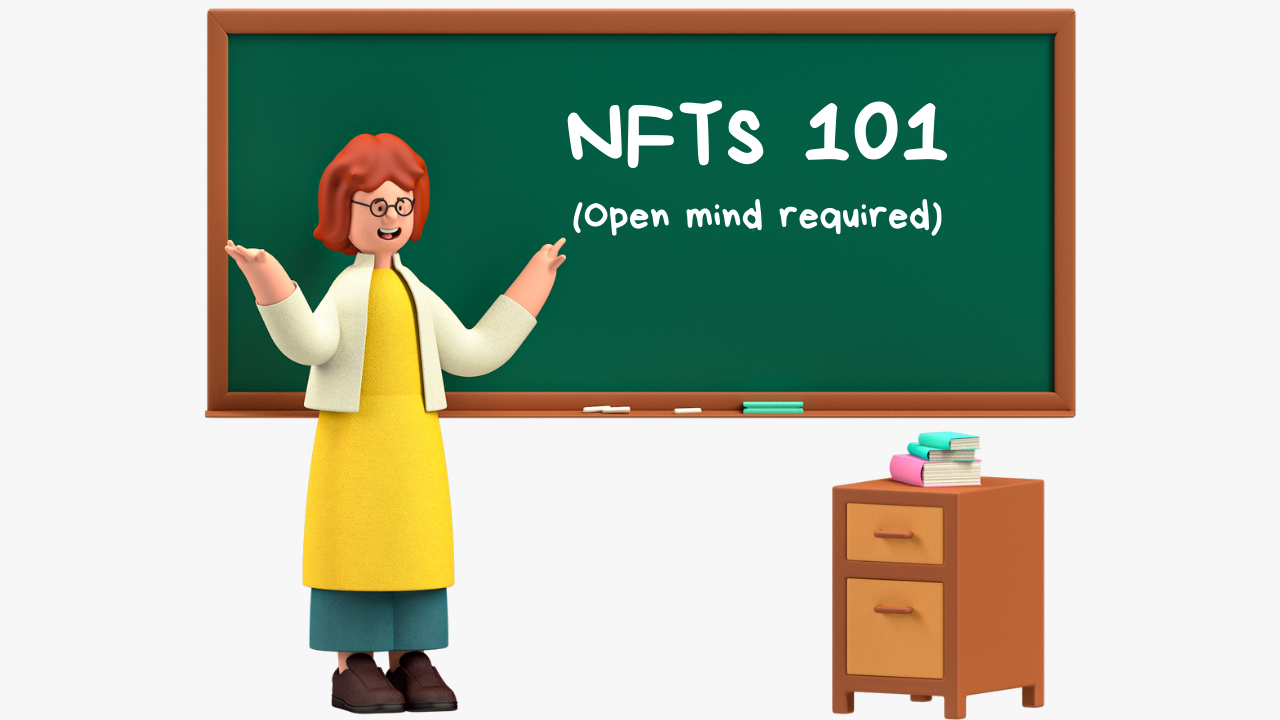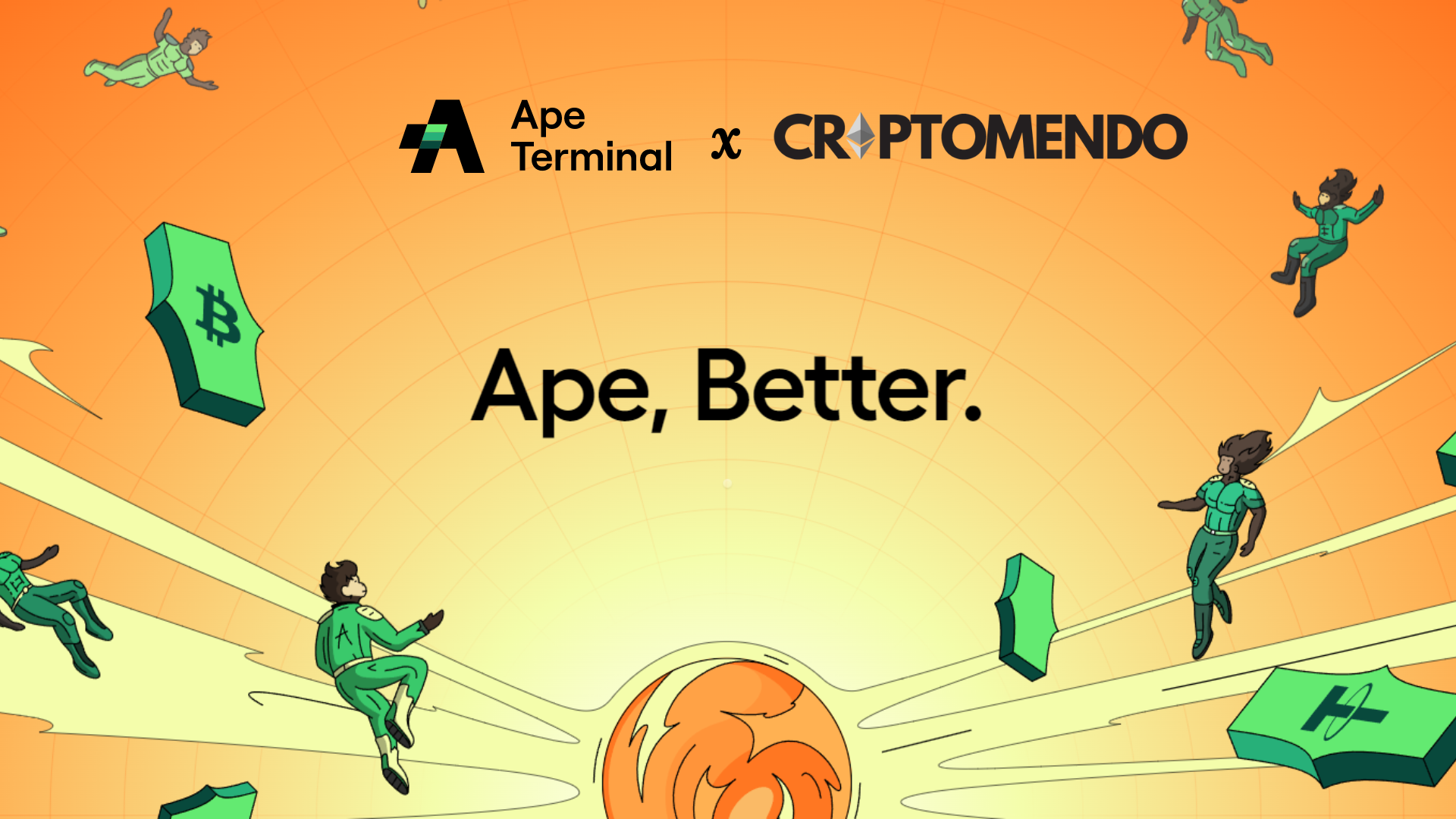NFTs have recently started taking over the crypto market, but also traditional companies are getting in on the hype. OpenSea, the most well-known NFT platform, has done tens of billions in trading volume. Some of the most well-known companies in the world have either bought NFTs or sold/given away their own NFTs.
However, there’s a group of people that are not convinced yet. Often, they just don’t understand the hype behind NFTs. They think they’re useless and shouldn’t be worth anything. Honestly, I don’t blame them.
Imagine you’re not familiar with crypto, and you hear about people selling digital art for insane amounts of money. It’s only natural that you have your doubts about all of it. But, I would like to ask you to just keep an open mind for a sec.
Common phrase #1: NFTs don’t/shouldn’t have value
I often hear people say that NFTs have no value, that they are worthless. Well, I hate to break it to you, but value is subjective. While you look at an NFT and think “wow what a waste of money”, someone else might look at it and think it looks pretty cool and would like to add it to his/her collection.
If you don’t see the appeal in it, of course you will think they are inherently worthless. Disregard the price for a second; value is what the collector or buyer attaches to an NFT. The price is what the NFT costs. Warren Buffet said it best: “Price is what you pay, value is what you get.”. What matters is that it has value to them. This 13-second clip from Rick & Morty actually sums it up quite nicely:
Common phrase #2: NFTs are hurting the environment
Well, I could rant about how most of the articles that talk about this over-exaggerate the situations or flat-out use wrong information. They do anything to make the headline as flashy as possible.
But, I’m not gonna do that. Instead I’ll just ask this question; is that your only problem with NFTs? See, most of that information is simply not correct. But, it has some foundation of truth. Most NFTs are Ethereum based. The Ethereum blockchain currently runs on a Proof-of-work (PoW) consensus mechanism. Simplified, that means that there is a whole network of miners that work to keep the network safe and up-and-running. They use GPU’s/miners to do so, which costs electricity.
Now, it’s quite debatable if this has a huge impact on the environment as a big portion of the used electricity comes from renewable sources. About 39% of proof-of-work mining comes from renewable sources.
Setting that aside, Ethereum will soon be migrating to a proof-of-stake consensus mechanism which doesn’t require the network to be kept safe by miners that have to use electricity. Ethereum’s switch from PoW to PoS will result in a 99,95% reduction in total energy use.
So, I guess that settles that. Also, Ethereum is not the only blockchain in the world. There’s many other alternatives on the market, which have their own consensus mechanisms and characteristics. A lot of them do not use the PoW consensus mechanism and thus don’t require a lot of electricity. Blockchains like Phantasma Chain are actually carbon negative.
Common phrase #3: NFTs use too much energy
There are people that say NFTs use too much energy. Well, how much is too much? The thing is this: If you don’t believe in NFTs or don’t think they have value, then any amount of used electricity will already be too much in your eyes.
People who trade NFTs or are invested in the crypto ecosystem will look at it differently than someone who is not into this type of stuff at all. We could draw comparisons with other things humans do as hobbies or habits they formed, and say it is not worth the electricity/materials. And as an outsider, of course you think that. But to the person for whom it is a big part of their life, they’ll disagree. I’m trying to avoid naming anything specific, as to avoid stepping on anyone’s toes.
Common phrase #4: NFTs are useless and don’t have a use case
That’s simply not true. I think most people tend to generalize NFTs. It is just a new tech, just because you saw one questionable pixel art sell for a big sum does not mean that is all what NFTs are about. Here are some examples:
- Tickets to events can be sold as NFTs. That way, it can always be verified which ticket is actually legit and which one is not. People buy fake tickets to concerts quite often.
- You can integrate perpetual royalties into your NFTs, at whatever percentage you feel is fair. But, the awesome thing is, that that royalty is still applicable if the NFT is sold between two third parties. Example; I buy an NFT. I pay a royalty over thet purchase to the artist. Then, let’s say the artist builds her reputation and she becomes more known. The demand for the NFT might rise and I sell it for a big profit. Even then, the artist gets a royalty over the sale. In real life, this does not happen. The original artist does not benefit from increased demand for her previous work.
- NFTs can be ownership certificates
- NFTs can give access to certain things. That could be a game, a launchpad for new companies or to a specific community. This can be realised due to the verifiable nature of NFT ownership.
- NFTs can be used as in-game items or cosmetics. If you are a gamer, you probably know the feeling of acquiring rare in-game items or expensive cosmetics. How cool would it be if you could actually truly own that? Inside a wallet that you control, and given the ability to trade it with others without having restrictions. Or have you ever had very rare items, which eventually led you to sell your entire account because it was thát valuable, but you couldn’t sell items between players?
- NFTs as a fundraising method. NFTs can actually empower artists, companies or games, to sell NFTs in an effort to fund their development or their work. Value could then be funnelled back to NFT holders.
Common phrase #5: NFTs are not art
Well, I won’t argue with you on this. I think the opinions are quite divided on this, at least from my point of view. In my opinion, (certain) NFTs are to be seen as art. Others, not so much. But at that point, it becomes kind of a grey line. And who am I, or you, to define that line. So whether you think NFTs are art or not, I won’t argue with you.
But you can not only look at NFTs as art, they can also be seen as collectibles. And like you may know, humans like to collect stuff. It’s human nature to collect things, this article by James L. Halperin talks about it very clearly.
Gary Vee also said it pretty well: people buy things to communicate who they are to the world. People buy clothes, certain brands or items, because they use it to communicate their personality to those around them. And collecting certain things gives you access to that community, which is a huge reason people collect things in real life. But it is also one of the reasons why people buy certain NFTs; for the community.
Common phrase #6: A digital piece should not be worth this amount of money!
I think this is one of the main things that trigger those that don’t understand the appeal of NFTs. I honestly get it. Imagine you’ve never heard about crypto or NFTs and you start seeing the crazy amounts of money people are paying for NFTs.
Cryptopunks and Bored ape NFTs for example, are being traded for huge amounts of money. Now imagine you’re reading your favorite news outlet and you hear about a picture of a monkey being sold for 200K dollars. If you’re a normal person, your first thought will probably be “wtf?”.
Cryptopunks is one of the oldest NFT collections and BAYC is probably the most well-known project in the space due to the high profile people who currently own one. From rappers, to tv-personalities and influencers.
At this point, it’s become a very exclusive community that the average person simply doesn’t have access to. High demand but a very low supply (only 10K units) will lead to high prices. Obviously, it’s hard to justify the prices these apes are trading for. But if that is what people are willing to spend to be part of the community, gain some bragging rights and be able to network with other owners, then go right ahead. VALUE IS SUBJECTIVE. Let’s also not forget a lot of people or companies buy one solely for the engagement it generates. From believers and skeptics alike.
Common phrase #7: NFTs are a scam
I’ve heard this one a few times but I don’t seem to understand what they mean by it. Are NFTs as a whole a scam? NFTs are just a new technology, it all comes down to how it is used. There are definitely cash grab and scam NFT projects out there. But hey, you can find that everywhere in life.
Common phrase #8: I can right click and save the NFT image!
At some level, you’re absolutely right. You can indeed save the image. But, it is not only the image that gives a NFT its value, it’s the token. Here’s the thing, NFTs consist of two “components”. (1) The token, which makes it transferable and easy to check ownership. (2) The image/video/document. You can save the image, but that doesn’t mean you own the token. Think about the image as the frontend and the tokens as the backend.
So, let’s say there is an artist who makes a piece of art and sells it as part of her NFT collection. The artist mints the NFT’s, lists them for sale and ultimately sells them. Anyone can save the image, but only the person who bought the NFT has verifiable ownership of the NFT. Now, you might ask yourself this: if anyone can view or save the image, what’s the point in buying the NFT?
- Back to the basics; people like to buy stuff to communicate who they are. Having proven ownership of an NFT made by and sold by a certain artist, can be a way for people to communicate their personality and things they are into. If you truly support an artist, why not buy her art in a way that is verifiable anr proves what the actual source of the art is.
- People like to collect things. People buy all sorts of things to either get access to the community of like minded people, or they just like how it makes them feel. They get joy out of it. And it just wouldn’t be the same if you’re buying counterfeit ones or those not “official”. Would you buy copied Pokémon cards? Would you buy replicated designer clothes? Some people buy figurines/collectibles from the official companies who own the IP, others don’t care and buy them from AliExpress. So yea, you can save the image but some prefer to buy the “official” one that came from the actual artists.
- The tokens behind the NFT are what actually give access to certain utilities a NFT might have. To give you some examples, there are NFTs which represent in-game items. Yes, you can save the image, but you can’t use it in the game. Or an artist brings out a collection where one of the utilities is a meet and greet; you can save the image, but you won’t be able to set up the meet and greet. An NFT collection could also provide access to certain events if you can prove ownership. Again, you can save the image but you’ll miss out on the utility.
Common phrase #9: NFTs are stupid

Common phrase #10: your NFT is not worth x amount just because you listed it at that price
This is semi-true. But, in NFT collections of let’s say 10K units, there is what we call a ‘floor price’. That is the price that the cheapest unit of that collection is listed for. So basically the cheapest one you can buy from that collection. That is one of the main metrics that can be used to kind of gauge how much an NFT is worth.
If it is a 1 of 1 piece by an artist, well then you do actually control the price. No one might be interested in the price you listed it for, but for what it’s worth you can now ask whatever you want. It’s similar to actual paintings who sell for large amounts, simply because it is owned by a collector who doesn’t necessarily want to get rid of it unless he gets a hefty sum for it.





